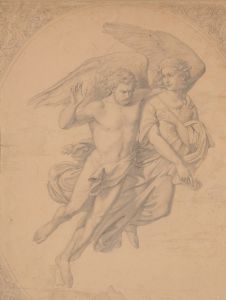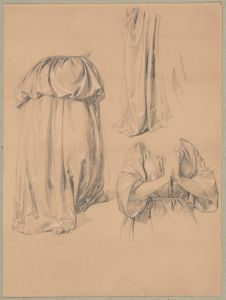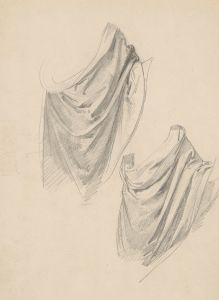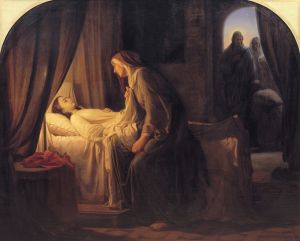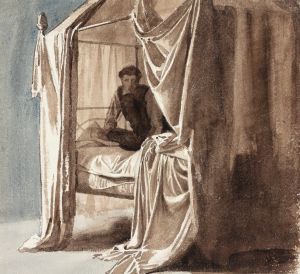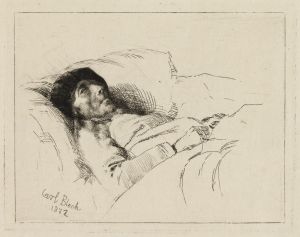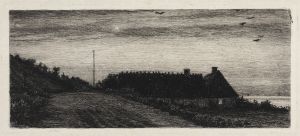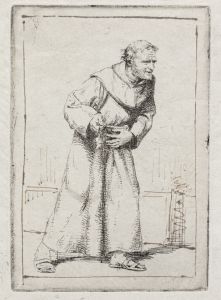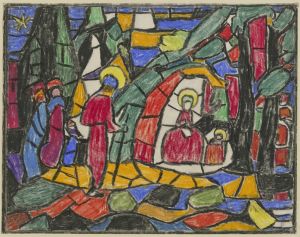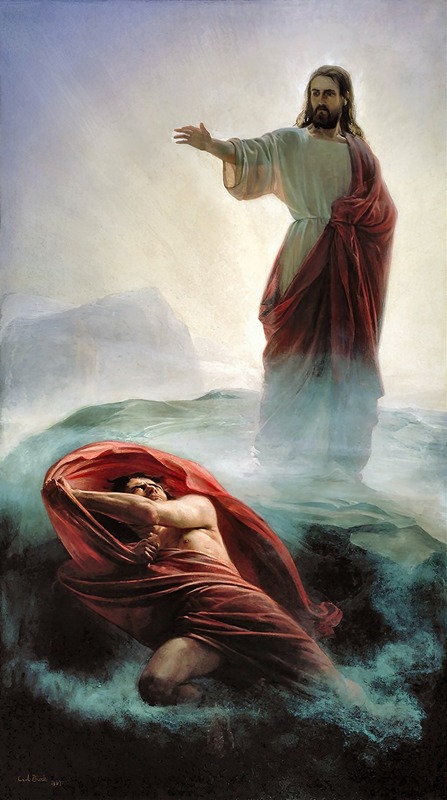
Denying Satan
A hand-painted replica of Carl Bloch’s masterpiece Denying Satan, meticulously crafted by professional artists to capture the true essence of the original. Each piece is created with museum-quality canvas and rare mineral pigments, carefully painted by experienced artists with delicate brushstrokes and rich, layered colors to perfectly recreate the texture of the original artwork. Unlike machine-printed reproductions, this hand-painted version brings the painting to life, infused with the artist’s emotions and skill in every stroke. Whether for personal collection or home decoration, it instantly elevates the artistic atmosphere of any space.
"Denying Satan" is a painting by the Danish artist Carl Bloch, created in 1865. Carl Bloch, born on May 23, 1834, in Copenhagen, Denmark, was a prominent painter known for his religious and historical works. He studied at the Royal Danish Academy of Fine Arts and was influenced by the works of Rembrandt and other Dutch masters.
The painting "Denying Satan" depicts a biblical scene where Jesus Christ is confronted by Satan during his forty days of fasting in the wilderness. This event is described in the New Testament, specifically in the Gospels of Matthew, Mark, and Luke. In this narrative, Satan tempts Jesus three times, but Jesus resists each temptation, reaffirming his faith and mission.
In "Denying Satan," Bloch captures the moment of confrontation between Jesus and Satan. The composition is dramatic, with Jesus standing resolutely, his hand raised in a gesture of refusal. Satan, depicted with a sinister and dark appearance, is shown recoiling from Jesus' firm stance. The background of the painting is stark and barren, emphasizing the desolate wilderness setting of the biblical story.
Bloch's use of light and shadow in the painting is notable, as it highlights the contrast between the divine presence of Jesus and the malevolent figure of Satan. The light source appears to emanate from Jesus, symbolizing his purity and divinity, while Satan is shrouded in darkness, representing evil and temptation.
Carl Bloch's religious paintings, including "Denying Satan," were highly regarded during his lifetime and continue to be celebrated for their emotional depth and technical skill. Bloch's works were commissioned for various churches and institutions, and he became one of the most influential Danish artists of the 19th century. His paintings often conveyed powerful spiritual messages and were characterized by their meticulous attention to detail and expressive use of color.
"Denying Satan" is part of a larger series of paintings by Bloch that illustrate scenes from the life of Jesus Christ. These works were commissioned by the Frederiksborg Palace Chapel in Denmark, where they remain on display. The series includes other notable paintings such as "The Sermon on the Mount," "The Transfiguration," and "The Crucifixion."
Carl Bloch's legacy as an artist is marked by his ability to convey profound religious themes with clarity and emotional resonance. His paintings have been widely reproduced and continue to inspire viewers with their depiction of biblical stories and their exploration of the human condition.
In summary, "Denying Satan" by Carl Bloch is a significant work of religious art that portrays the biblical account of Jesus resisting Satan's temptations. Created in 1865, the painting is celebrated for its dramatic composition, masterful use of light and shadow, and its enduring impact on religious art.





